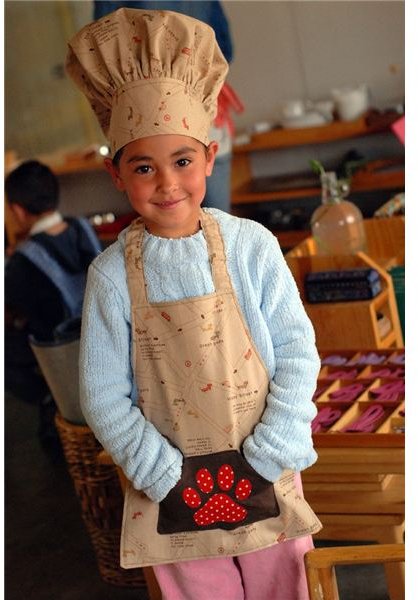Cooking with Preschool Children in the Classroom: Learning & Safety
The Ultimate Learning Experience
Cooking results in good food and is a natural part of living. Cooking is also full of opportunities for learning, so consider preschool cooking lesson plans as activities than can be part of a child’s education both in school and at home. Think of what cooking combines; math, reading, creative thinking, science, sensory experiences and social skills.
In the classroom, cooking exposes children to a variety of sensory and cognitive experiences. Cooking is a science and children can see how food changes before their eyes. An egg, for example, is loose and wet, but after it is boiled it becomes hard and rubbery. Children can also smell the aroma of foods and have many opportunities to feel different textures from soft squishy pudding to hard, crunchy carrots. Call the children’s attention to hearing the different sounds of food, like the pop of popping corn and the crunch of fresh celery. Last, but not least, children can taste different foods and enjoy the flavor.
Cooking together also provides social opportunities and helps children develop social skills, like the importance of cooperation and sharing in a group. Selecting a recipe, gathering ingredients, taking turns stirring, pouring, and chopping can be a group effort. Let’s not forget how cooking teaches math as the children measure ingredients, count amounts of foods to be combined, and recognize shapes in various foods.
There is an art to cooking as well. Children use creativity as they find new ways to combine ingredients and make up new recipes. Just think how much fun children have when arranging sliced apples on a plate with peanut butter and raisins in the center to make a flower. There are many opportunities to design, decorate, and display food in an appealing manner. Food presentation is so important – what looks good, tastes good!
Safety Precautions in Cooking
Before beginning to cook with your preschool students, there are safety precautions which are necessary to uphold in the classroom.
- Everyone must wash their hands before handling food.
- Do not allow children with colds or sores on their hands to handle food. Find an alternate activity for these children, like becoming an observer or drawing a picture of the process for the class to hang on the wall.
- Use low tables for work surfaces at a height children can reach.
- Never allow children to stand on chairs.
- Young children should not be allowed near stoves or heating elements. If your facility does not have a kitchen, think of microwaves, toaster ovens, or electric skillets on the table. Remind children that all these appliances are very hot.
- Provide enough tools and utensils for all children to participate. Use unbreakable bowls and plastic utensils. Plastic knives are good for children to use when cutting soft foods, like cooked eggs, bananas, and cooked potatoes.
- Make sure there is adult supervision at all times. In the event of a minor burn, run cold water over the area immediately. Minor cuts need a thorough washing and bandage.
- Identify children with food allergies. Give them a different project that will not involve the foods they cannot eat or modify the recipe to include these children.
Try to incorporate a classroom recipe at least once a month in your classroom. It can be a fun and tasty time for your group and has learning experiences to benefit everyone.
Photo Credit: www.flickr.com/photos/montessoribyhand/2384016410/sizes/l/
